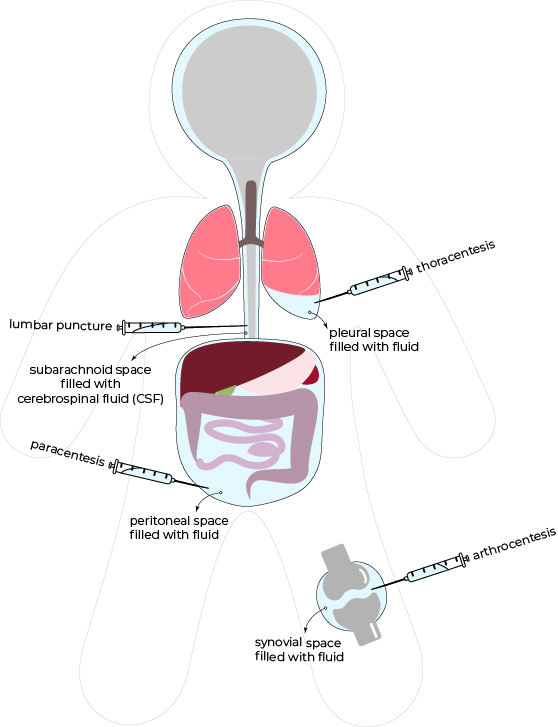
• Body fluids are often obtained to guide diagnosis of certain conditions (e.g. infection and autoimmune disorders), as well as to provide therapeutic relief of pain and discomfort caused by fluid accumulation in the affected area.
• Body fluid sampling is indicated when it is thought to yield additional information that cannot be obtained via blood or urine tests (which sampling methods are less invasive and much preferred) as it directly comes from the affected area rather than from a systemic site like blood and urine sampling.
• The most four common places to obtain body fluids are:
Pleural space: via thoracentesis, often indicated in the treatment of moderate-severe pleural effusion or in cases where the underlying causes are less obvious
Peritoneal space: via paracentesis, often indicated in ascites with suspected infection or malignancy, and might be routinely used to relieve pain and pressure in chronic ascites
Cerebrospinal space: via lumbar puncture (LP), often indicated in the diagnosis of meningitis and sometimes used as therapeutic relief of increased intracranial pressure
Synovial space: via arthrocentesis, often indicated in joint effusion with suspected septic arthritis or autoimmune disorders such as rheumatoid or gout
• Details on each body fluid analysis are covered separately (click on each box above to learn more).